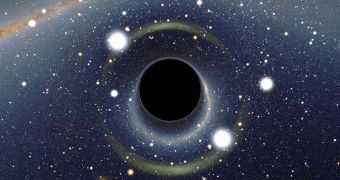A group of investigators at the NASA Jet Propulsion Laboratory (JPL), in Pasadena, California, announces that it will soon become able to analyze peculiar celestial flashes that appear in the night sky. But this will become possible only when a new telescope, now under construction, is completed.
Eventually, the New Mexico-based observatory will feature no less than 13,000 antennas, and this will allow radio astronomers to conduct studies at a scale never before achieved. Studying celestial flashes is a new area of astronomy, but one that could have significant implications for our future.
The future Long Wavelength Array (LWA) was designed in such a manner that it can carry out sweeping studies of the sky – from horizon to horizon – in multiple frequencies. This will provide experts with a comprehensive view of the sky.
In the LWA project, the JPL contributes the advanced digital electronic systems, which is a critical component of the array. The entire project is coordinated and led by experts at the University of New Mexico, Daily Galaxy reports.
“We'll be looking for the occasional celestial flash. These flashes can be anything from explosions on surfaces of nearby stars, deaths of distant stars, exploding black holes, or even perhaps transmissions by other civilizations,” JPL radio astronomer Joseph Lazio explains.
By this summer, the first LWA listening station is scheduled to go online. For starters, experts will only have access to 256 antennas, but more will become available as soon as they are built. A total of 53 stations will be constructed by the time the project is done.
The antennas they will contain will cover a circular area with a diameter of about 400 kilometers (248 miles). The observatory will provide us with a new method of listening in on radio signals coming from other planets.
This could enable us to detect signals emitted by alien civilizations, by exploding supernovas, by black holes and other cosmic objects. At this point, there is no telling what experts will hear once they begin to listen in hard enough.
“Because nature is more clever than we are, it's quite possible that we will discover something we haven't thought of,” Lazio explains, adding that the LWA will conduct its studies in the radio-frequency range of 20 to 80 megahertz.
According to experts, these frequencies have been poorly explored in the past, and represent one of the last great frontiers in radio astronomy today.

 14 DAY TRIAL //
14 DAY TRIAL //